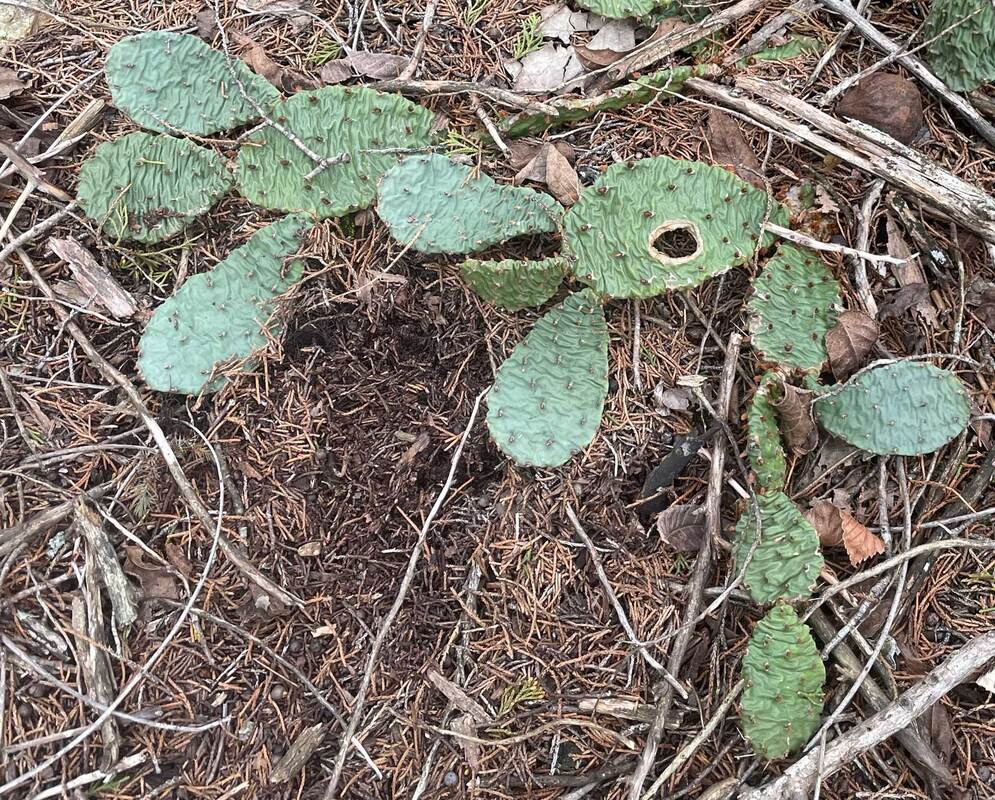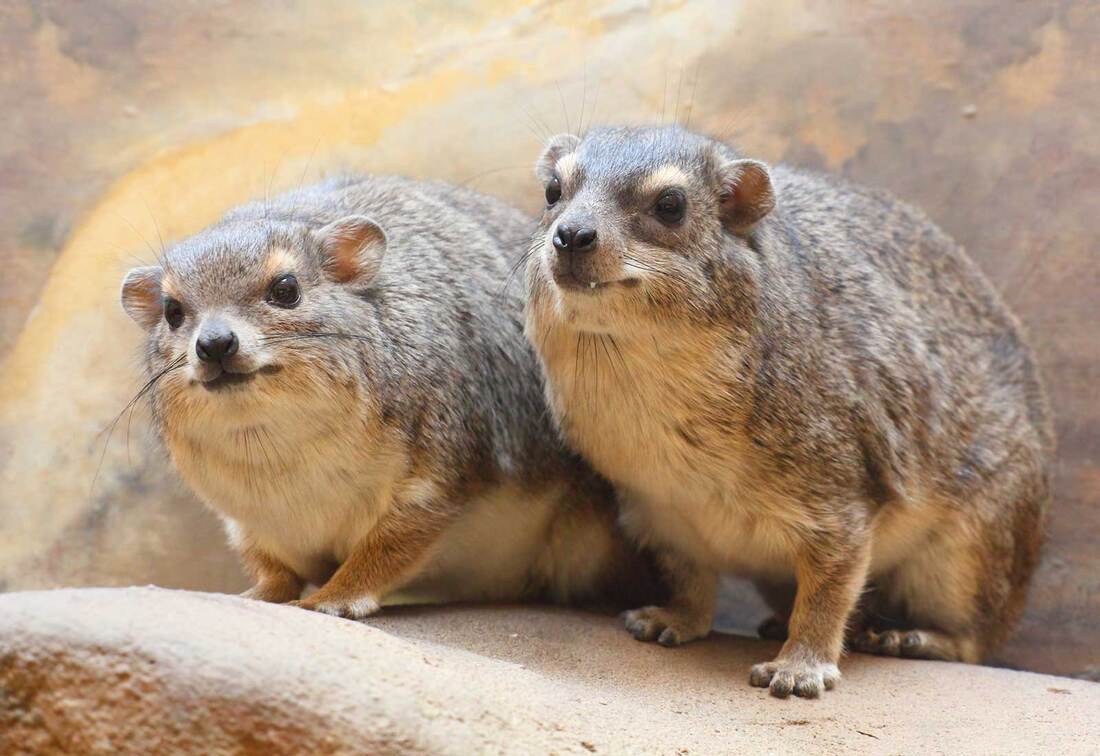|
While hiking the other day, we saw the frog pictured below. The night before, the temperature had dropped to below freezing. Yet this critter seemed happy and active. Frogs never fail to surprise me. At first glance, this looks like a young bullfrog (a very common frog in the midwest US). But this is actually a green frog (Lithobates clamitans). The bullfrog grows much larger, but a younger one looks a lot like a green frog. How can you tell the difference? See that fold of skin extending from the frog's eye all the way down the length of its body? That's a sure sign this is a green frog. Bullfrogs only have the fold that wraps around the tympanum (the circular structure behind the frog's eye that serves as an eardrum). By the way, the tympanum also allows you to determine if the frog is male or female. In this photo, see how the tympanum is much larger than the frog's eye? This means it's a male. If the tympanum is equal to or smaller than the eye, it's a female. This is true for green frogs and bullfrogs. Photo Credit: Green frog - Stan C. Smith
0 Comments
Life's Great Mysteries - At any given moment, are cell phone calls going through my body?12/21/2023 Think about it. Millions of people are making calls all the time. The phone calls from these cell phones (in the form of radiofrequency waves) go to nearby cell towers, which then transmit the waves all over heck and gone. These phone calls and texts and photos and funny cat videos are going through walls and trees and clouds and, of course, people. At this very moment, someone’s conversation about their favorite movie might be passing through your body. Someone is asking someone else out for their first date, and the person’s life-changing answer is flying directly through your heart. Someone is texting a picture of the Cajun gumbo dinner they are eating, and the picture is passing right through your stomach and intestines. Come to think of it, what about all those television and radio signals? A rerun of the original Star Trek series may be passing through your noggin right now. Oh, the things we could learn if we could detect and understand all these signals passing through us!
Is this really happening? As it turns out, yes and no. As you probably know, a cell phone won’t work well in a deep basement or behind really thick walls. That means there are limits to what radiofrequency waves can pass through. The human body is mostly water, and water can block the waves. So, your body partially blocks (absorbs) some of the waves. A human body isn’t all that thick (though mine is thicker than it used to be), so some of the waves do pass all the way through. This begs the question, with all these radiofrequency waves passing through us, is it dangerous? As it turns out, the answer is, not really. Because it depends on how much of it we are getting. The radiofrequency waves coming from a cell phone are very weak. The waves from a large cell tower are much stronger, but they are directed at the horizon, not at the ground below them. The waves become less of a problem with distance. Basically, you don’t have to worry about it, unless you decide to climb to the top of a cell tower, pitch a tent and camp right next to the transmitter for the next ten years. Also, consider this… radiofrequency waves are not ionizing radiation like X-rays or gamma rays. They do not break chemical bonds in your body. Many, many studies have been done to see if these waves have ill effects on the body, but no adverse effects have been linked to cell phone use. On the other hand, there may be problems with addiction to funny cat videos. Did you know there are 24 species of dancing frogs, and the males of all species "dance" to attract mates? Dancing frogs (all of them are in the genus Micrixalus) live in the Western Ghats region of South India.
Okay, so why do we call them dancing frogs? When trying to attract a female, male dancing frogs stretch out their hind legs to the side, one at a time, and wave their webbed toes around in the air in a rapid motion. Kind of like a dance... well, a dance in which you only move one leg at a time, flex your toes, then do the same with the other leg. This side-kicking behavior also comes in handy when another male frog tries to crowd in and steel the female. The first male will kick the intruding male away with a quick snap of its leg. Unfortunately, dancing frogs are some of the most endangered frogs in the world, with 15 of the 24 species endangered and 2 species critically endangered. These frogs are threatened by multiple anthropogenic factors. This means factors related to human activities. As usual! Missouri isn't a desert state, so people don't usually think of cactuses growing here. (by the way, many people assume cacti is the correct plural for cactus instead of cactuses. But dictionaries recognize both versions as correct, leaving it up to the writer, and I prefer cactuses because it follows standard English grammatical rules, as opposed to the Latin cacti... so, don't blast me for using cactuses!). We do have a few cactus species here, but only one type is common enough that you might occasionally see it—the eastern prickly pear. I usually see them when I am hiking in the fall or winter because the other vegetation turns brown then, making the green prickly pear easier to spot. In the winter, the green paddle-like pads kind of dry up and become wrinkly, like this one that I found on a hillside near our house. Like many cactuses, prickly pears have sharp spines, which grow in clusters on the flat pads. The spines help the plant in two ways. They protect the cactus from being eaten by herbivores. Also, they help the plant reproduce and spread into new areas. The flat pads break off easily, and sometimes the spines make the pads stick to the feet or fur of animals. The pad breaks off, and the animal will carry it until it drops onto the ground in a new place. The pad will then take root and grow a new plant. This is a type of asexual reproduction, called vegetative cloning. Prickly pears also reproduce sexually, which is why they produce numerous large yellow flowers to attract bees and other pollinators. Photo Credit: - Prickly pear cactus - Stan C. Smith Did you know the rock hyrax, though it looks kind of like a guinea pig, is actually most closely related to elephants and manatees?
Hyraxes, native to Africa and the Middle East, have teeth, toes, and skull structures similar to those of an elephant’s. This is because hyraxes and elephants share a common ancestor. Hyraxes have strong, flat molars for grinding food, and they have two incisors that grow out to be tiny tusks. As the name suggests, rock hyraxes spend much of their time among the rocks, particularly on cliffs and hillsides. Okay, what's all this about hyraxes, elephants, and manatees? Let's dig deeper. Throughout the late Eocene (56 to 34 million years ago), many species of hyrax-like mammals (called hyracoids) thrived in Africa and the Middle East. Some were as small as a mouse, others weighed almost 3,000 pounds (1,360 kg). The descendants of these hyracoids evolved in several diverging directions. Some became the small, modern hyraxes of today. Others moved into the water, gradually becoming the sirenians (manatees and dugongs), and some became the various elephants. Sources often state that hyraxes are the closest relatives to the elephant family, but DNA evidence suggests that the manatees and dugongs might be closer. Still, they all share a common ancestor, and hyraxes have many resemblances to elephants, including their toenails, the shapes of many of their bones, the sensitive pads on their feet, small tusks, excellent hearing, good memory, and sophisticated brain functions compared to other mammals of similar size. I’m being serious here. Think about it… light is pretty persistent. After all, you can see stars that are many light years away. That means the light from those stars has traveled for years—even thousands of years—to get to your eyeball, and over all that distance and all that time the light has persisted. So, it seems logical to me that, in an enclosed room with no windows, the light from a flashlight should stay in the room even after you turn off the flashlight. After all, light is an electromagnetic wave that goes on forever…
But only if nothing absorbs it. Let’s say you’re in a room with no windows. You turn on a light bulb to light up the room, but the room gets dark again as soon as you turn off the bulb. Why? Because the light is quickly absorbed by the walls (and even by the air particles in the room). It happens so fast your eyes can’t detect it. It occurs to me that if the light wasn’t being absorbed, the room would get brighter and brighter the longer you left the light bulb on because the light would just continue bouncing off the walls, and the “old” light would remain in the room even as new light is being added. That’s a strange thought, but strange thoughts are the way I roll. Okay, let's take this a step further… what if the walls of the room are mirrors? Wouldn’t the reflected light just keep bouncing around in the room for a long time? Nope. The light still disappears in an instant, due to the fact that typical mirrors do not reflect 100% of the light hitting them. Okay, then what if we had really, really good mirrors? Like, perfect mirrors that reflect 100% of the light. Well, as it turns out, the mirrors with the highest reflectivity, made for reflecting a laser beam, have a reflectivity of about 99.999%. Therefore, the light in the room of mirrors would still disappear in an instant. You have to consider how fast light travels. If you have a little cubical room that is 10 cm wide on each side, a beam of light will bounce off the walls about three billion times in one second! So, even if the walls were made of the best mirrors in the world, with 99.999% reflection, the light would be gone in a tiny fraction of a second. So much for my idea of making a container to hold some light for when I might need it later. |
Stan's Cogitations
Everyone needs a creative outlet. That's why I write. Archives
July 2024
|







 RSS Feed
RSS Feed